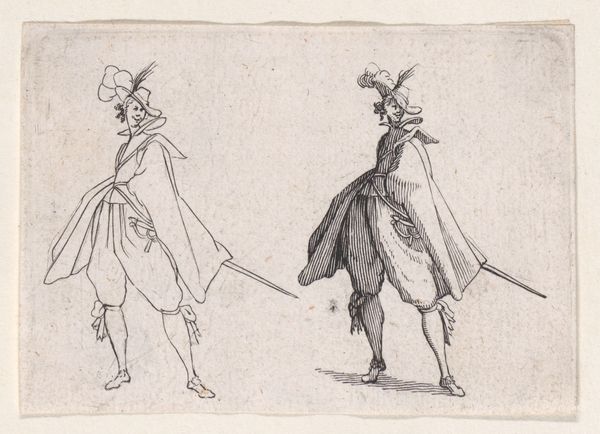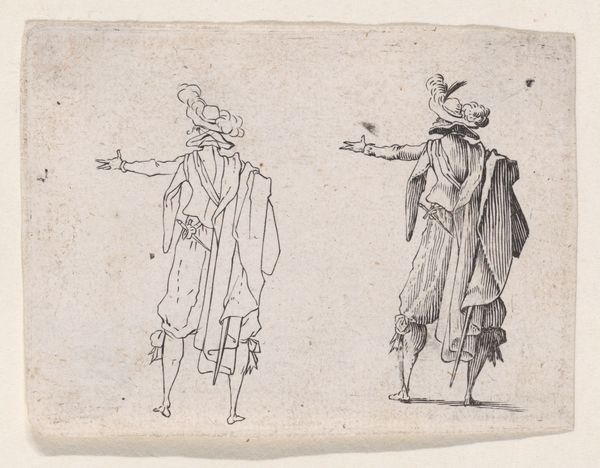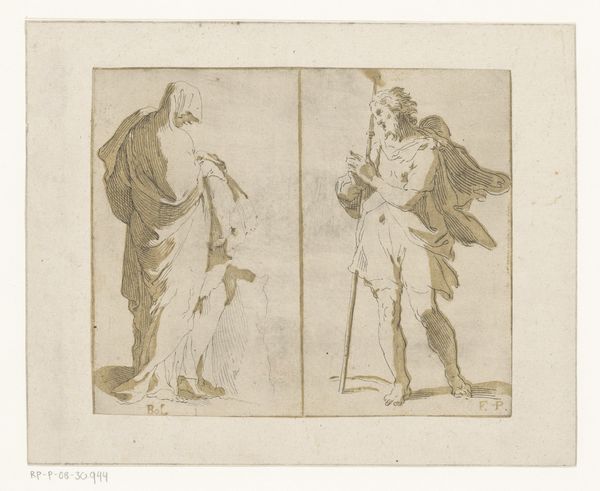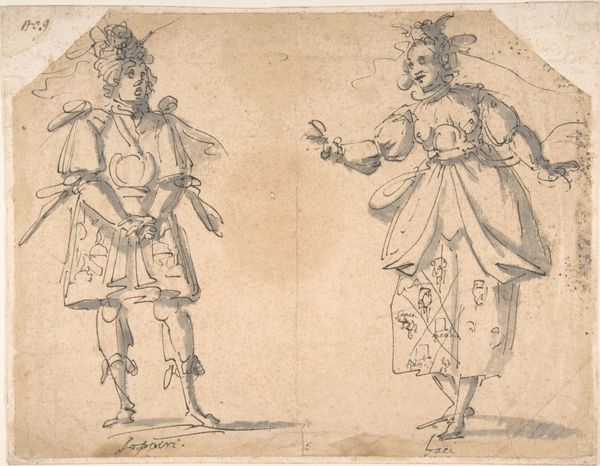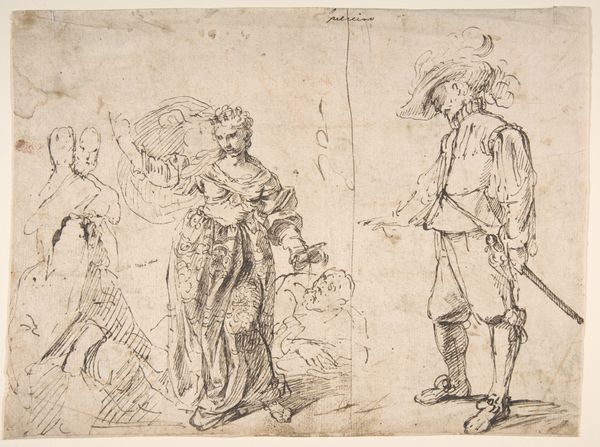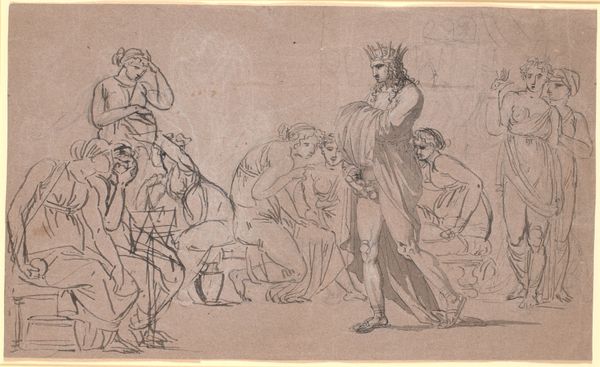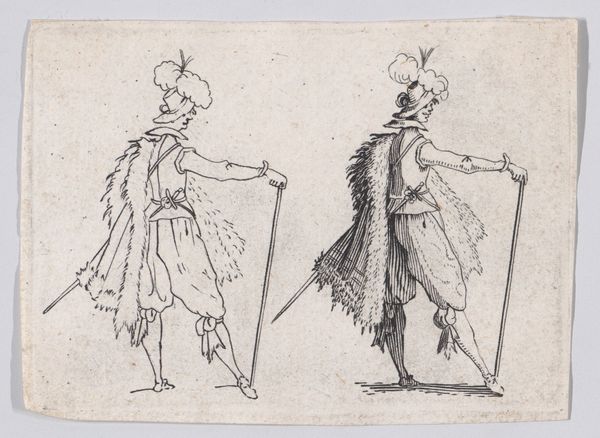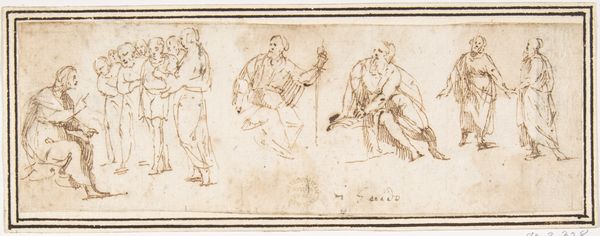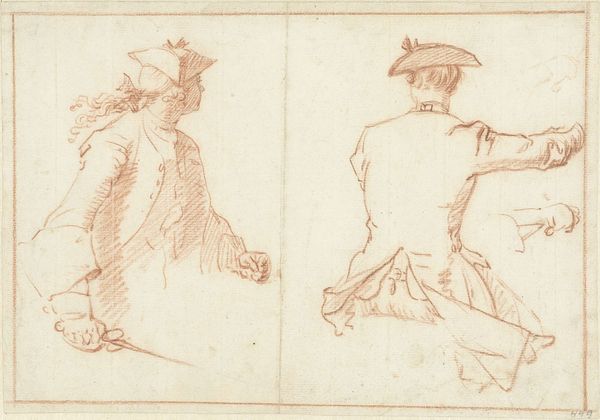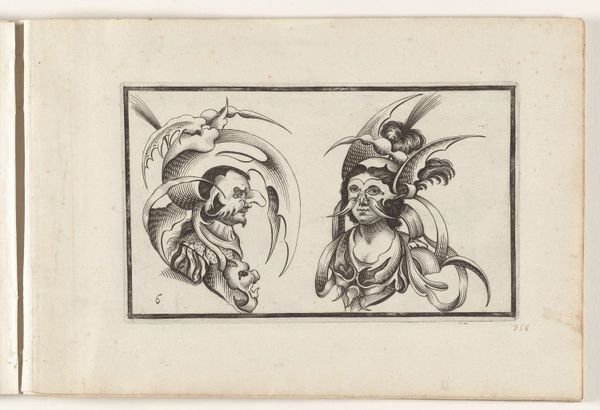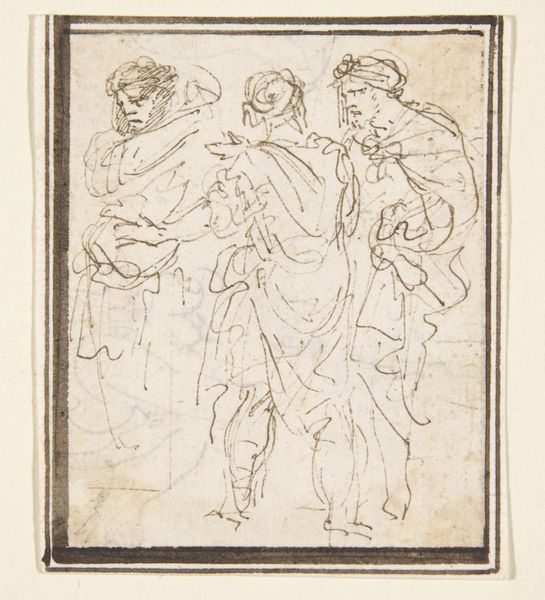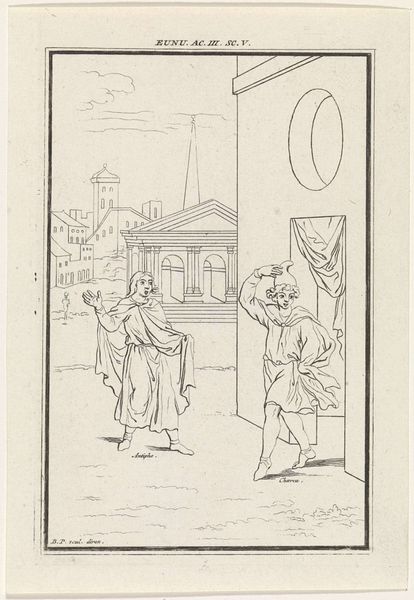
Copy of L'Homme Vu de Dos, Avec un Grand Épée (Man Viewed from Behind, With a Large Sword), from "Les Caprices" Series A, The Florence Set 1620 - 1700
0:00
0:00
drawing, print, engraving
#
drawing
# print
#
figuration
#
line
#
history-painting
#
academic-art
#
engraving
Dimensions: Sheet: 2 7/16 x 3 1/16 in. (6.2 x 7.7 cm)
Copyright: Public Domain
Curator: Ah, look at this. From the 17th century, we have a work entitled "Copy of L'Homme Vu de Dos, Avec un Grand Épée (Man Viewed from Behind, With a Large Sword)," from “Les Caprices” Series A, The Florence Set. It's an engraving. Editor: My first thought? Swagger! Pompous but... elegant? It's minimalist yet somehow excessive, especially with the feathery hat and ridiculously large sword. I feel like I am about to be challenged to a duel! Curator: Yes, the "sword" is part of the iconographic language. Remember, the sword represents power, justice, military strength. The turned back might signify contemplation or withdrawal, perhaps a reluctance to engage directly. Do you notice any social commentary here? Editor: Hmmm... Is it just me, or does that pose look super uncomfortable? The one leaning on the block almost looks as if he’s fallen over and someone propped him back up... To me, it’s more an embodiment of vanity – look at my sword! Admire my puffy pants! But... is anyone actually looking? It’s like a satire of the era's masculine ideals? Curator: Precisely. And academic art often used this posture to idealize classical human forms; by showing it this way, there’s satire. It’s an anonymous work, we do not know who created this, which suggests its aim to represent archetypes, the social classes as broad characters of history instead of unique individuals, maybe the military class particularly? Editor: Anonymous? Fascinating! It lets you project whatever anxieties or ideas about class, gender, or power you might have right onto it. A collective caricature! It also reflects the ephemeral, reproducible quality of the image, what it aimed to represent. A distributed form of commentary in a world of elites, printed by and for whom exactly? Curator: Perhaps. It also provides an excellent mirror into the values that remained constant across the century: class consciousness, visible shows of masculinity, maybe also with an incipient, ironic consciousness. Editor: I suppose you’re right. The work has an aura, that "cultural memory" thing, of a whole societal mood encapsulated by one haughty dude and his gigantic sword...
Comments
No comments
Be the first to comment and join the conversation on the ultimate creative platform.

